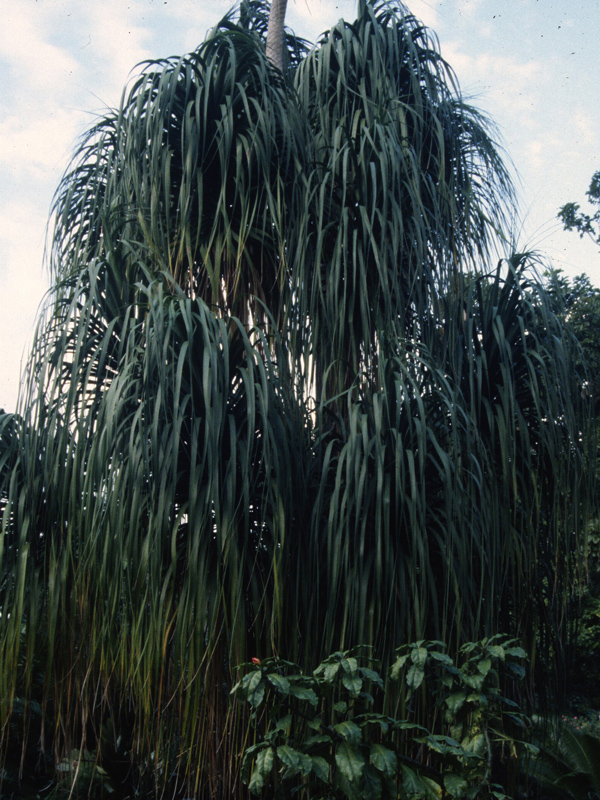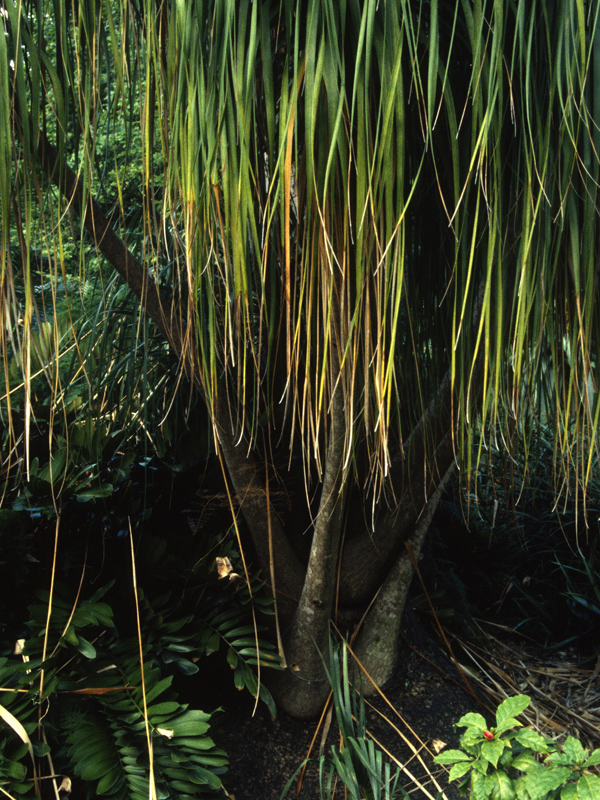| General Description | A palm-like tropical evergreen tree that is diocecious (male and female flowers appear on separate trees) with the female flowers giving way to edible fruits that are similar to pineapples. |
| Shape | Erect, multi-branched. |
| Landscape | Unique fruit tree or accent tree. Makes a good container plant in cooler climates. |
| Propagation | Propagate by offsets, suckers, cuttings of lateral shoots, or by seed that has been pre-soaked for 24 hours prior to planting. |
| Cultivation | Grow in full sun or partial shade in an average, medium moisture, well-drained soil. Frost intolerant, preferring warm, humid conditions. |
| Pests | No serious problems, although scale and mites may be a nuisance for indoor specimens. |
| Notable Specimens | Suan Packkad Palace, Bangkok, Thailand. |
| Bark/Stem Description | Trunk is grey, ringed by leaf scars, with conspicuous roots that help anchor the tree. |
| Leaf Description | Leaves are long and sword-shaped (to 15 cm long) with spiny margins, light green in colour. |
| Flower Description | Male flowers are small and fragrant, blooming in clusters that are enclosed by showy white bracts. Female flowers appear in compact, green flowerheads and are followed by the fruit. |
| Fruit Description | Fruit is edible, to 20 cm in diameter, with multiple segments, maturing from green to yellow to red, becoming aromatic once ripe. |

